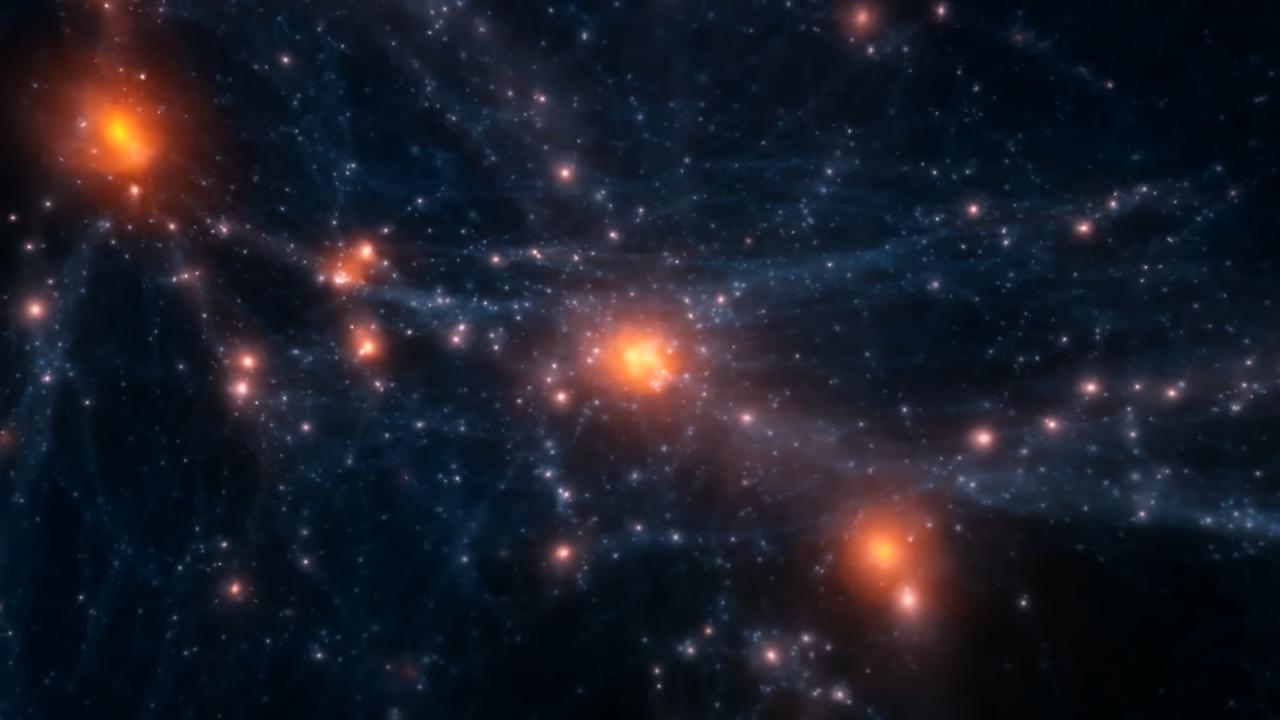New simulation charts how the early universe developed within seconds of the Big Bang
The model can reproduce the intergalactic medium in the first few seconds after the Big Bang.

A new simulation maps the first few seconds after the Big Bang, focusing on what scientists call the intergalactic medium, or the gas and dust between galaxies.
A team led by researchers at the Institute of Astrophysics of the Canary Islands (IAC) used machine learning, a type of algorithm in which a computer is trained to recognize patterns, to complete 100,000 hours of computation. The algorithm for this project is called Hydro-BAM.
This new work allowed researchers to chart phenomena including dark matter, energized gas, neutral hydrogen and other cosmic ingredients that are essential to understanding the structure of our universe, IAC representatives said in a May 20 statement.
Related: The history of the universe: Big Bang to now in 10 easy steps
"The research has also made it possible to reproduce with high precision the so-called 'Lyman-alpha forests,'" they added. That is a particular pattern of lines in a spectrum (light signature) of galaxies and similar objects created when clouds of hydrogen gas in the way absorb the galactic light.
"These 'virtual universes' serve as test beds for the study of cosmology," the researchers added. "However, the simulations are computationally very expensive, and current computing facilities only allow [us] to explore small cosmic volumes."
Hydro-BAM is designed to include probability, machine learning and cosmology, meaning the history of the universe. "This algorithm has made it possible to obtain very accurate predictions in just a few tens of seconds," the researchers said.
Get the Space.com Newsletter
Breaking space news, the latest updates on rocket launches, skywatching events and more!
Charting the absorption lines in the galactic spectra allowed the team to learn about where the clouds of hydrogen gas are located. Location is a proxy for distance, given that the universe is continually expanding. The clouds also give clues as to what is contained in the intergalactic medium of gas and dust.
"The breakthrough came when we understood that the connections between the quantities of intergalactic gas, dark matter and neutral hydrogen that we were trying to model are well organized in a hierarchical way," Francesco Sinigaglia, a doctoral student at the University of La Laguna in Spain, the IAC and the University of Padua in Italy, and lead author of the research, said in the statement.
The most recent study on the research was published in March in The Astrophysical Journal, and a related study was published in the same journal in November 2021.
Follow Elizabeth Howell on Twitter @howellspace. Follow us on Twitter @Spacedotcom or Facebook.
Join our Space Forums to keep talking space on the latest missions, night sky and more! And if you have a news tip, correction or comment, let us know at: community@space.com.

Elizabeth Howell (she/her), Ph.D., was a staff writer in the spaceflight channel between 2022 and 2024 specializing in Canadian space news. She was contributing writer for Space.com for 10 years from 2012 to 2024. Elizabeth's reporting includes multiple exclusives with the White House, leading world coverage about a lost-and-found space tomato on the International Space Station, witnessing five human spaceflight launches on two continents, flying parabolic, working inside a spacesuit, and participating in a simulated Mars mission. Her latest book, "Why Am I Taller?" (ECW Press, 2022) is co-written with astronaut Dave Williams.









